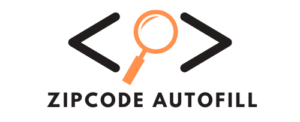ZipCode AutoFill was a project I started in late 2024. The goal was to create a passive income stream while simplifying location data in HubSpot.
The Problem
At previous jobs, I was tasked with being the HubSpot Administrator. I took this a step further and later started my own HubSpot consulting company. After working inside dozens of HubSpot portals, I noticed a recurring issue—location data was a mess.
The problems stemmed from end users manually entering data (typos) or inconsistent internal data entry standards (AZ vs. Arizona vs. Zona vs. arizona… you get the idea). No one had a good system for handling location data.
The First Solution
At a previous employer, this issue became a big one. The Sales Territory system depended on accurate location data, but in a HubSpot portal with over 100,000 contacts, location data was a free-for-all.
To solve this, I leveraged postal codes. Why? Because there are over 40,000 postal codes in the U.S. (our primary market), and from a single five-digit postal code, you can extract the city, county, and state with high accuracy. In fact, the first three digits alone can almost always narrow down the state.
It wasn’t a perfect solution and wouldn’t work for everyone, but it was good enough for our prospecting needs—at least until the Customer Success Team could properly enter the official address. I built a script that sent the postal code to Google’s Geocoding API, retrieved the city and state, and stored those values in HubSpot.
Since postal codes are only five digits, the likelihood of a typo was low, and I could easily filter out non-U.S. contacts. Thanks to Google’s generous free-tier API credits, I was able to clean and standardize all location data in the CRM in just a few days—at no cost to the company. The system worked perfectly, and location data became fully automated.
The Product
This solution was so effective that I figured I shouldn’t be the only one to benefit. And thus, ZipCode AutoFill was born.
ZipCode AutoFill (ZCAF) became my first HubSpot plugin, and building it was easier than I expected. I hosted everything on Heroku, using a PostgreSQL database and a Redis cache on the free tier. The frontend is a simple React app, while the backend is a Node.js app—chosen for their ability to handle high API request loads efficiently.
Here’s how it works:
- A user (or HubSpot) updates the postal code property on a record.
- A request is sent to my backend. The job is stored in the Redis cache using Bull.
- First, the system checks a spreadsheet of commonly searched postal codes.
- If no match is found, it checks the Redis cache.
- If still no match, it queries Google’s Geocoding API.
- Once the city, state, county, and country are retrieved, the system updates the appropriate properties in HubSpot—based on user-configured settings.
To keep costs low, the Redis cache stores successful lookups for a set number of days before deleting them. It also temporarily stores pending lookup jobs, ensuring they’re cleaned up after processing. This keeps my memory usage minimal, allowing me to stay within Heroku’s free tier.
Additionally, I implemented sanitation methods to filter out invalid requests, preventing unnecessary API calls and optimizing efficiency.
This approach is cost-effective, efficient, and most importantly—scalable. I stress-tested the system with users, and it handled concurrent requests gracefully.
Oh, and I almost forgot one of the most important things — how I actually make money from it! I implemented a credit system for this project. Upon signing up, users get 10 free credits to try out the product. Then, they can purchase more credits in bulk from our pricing page. Each successful postal code lookup counts as 1 credit. I try to be consumer friendly, so user’s aren’t charged for accidental lookups or look ups outside North America.
The Results
Today, ZipCode AutoFill is a set-it-and-forget-it passive income stream. After an initial marketing push in the HubSpot forums, the user base has grown organically. Clients love the service and consistently renew their credits.
To support users, I set up a Discord server for live customer support and a free email (via Zoho) for inquiries. I’ve also worked on custom requests, such as automated email alerts when credits drop below a certain threshold.
The Bottom Line
Overall, this project was a success. It’s not a massive money-maker—it covers my $19 Heroku bill and buys me a coffee each month—but it runs smoothly with zero maintenance.
If you’d like to learn more about ZipCode AutoFill, feel free to email [email protected] or join the Discord server.

